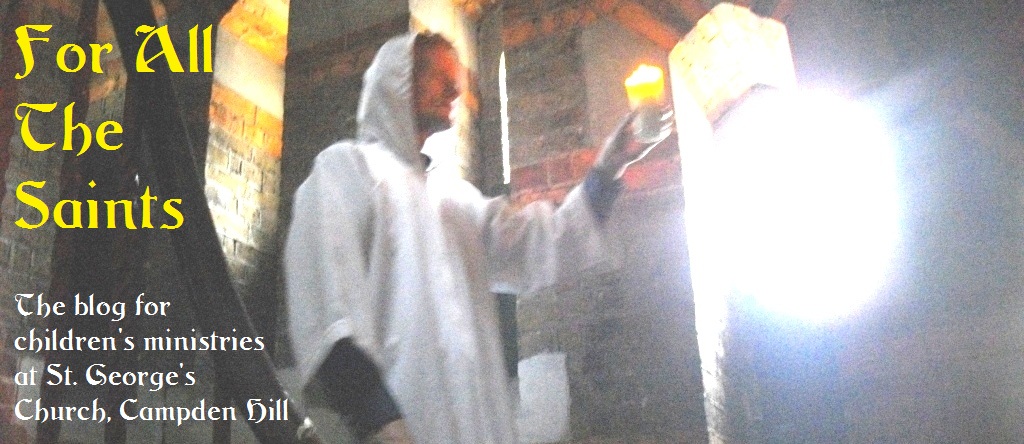Sorry this blog has been dead lately – I’ve been in Christmas Pageant Admin Hell, otherwise known as “sorting out the cast list and making sure everyone has a costume.”
Anyway, I’ve been to a few seminars over the last few weeks and read a few letters from the Diocese, and it’s gotten me thinking, which has led to the following list:
What do children need to grow in faith?
Feel free to add your own ideas. This list is in no particular order.
1. To feel that they belong, are known, and are welcomed.
2. Storytelling that is active and engaging.
3. Repetition. Both in story and song and in traditions. When a child can enter into a festival again and again, year after year, and come to know it in all its layers through the repetition of hallowed traditions, that is a powerful tool for learning about the faith and for experiencing God’s presence.
4. Challenging texts that they may not understand completely, but which they know and can come to understand.
5. Christianity proclaimed joyfully and unblushingly as good news – but with its historic (and current) sins and prejudices acknowledged when the children become old enough to know about them and demand accountability.
6. Creativity in responding to stories.
7. A chance to be recognised in the church community not just as recipients of ministry but as leaders who can minister to others.
8. A sense of ownership of the church space – to be allowed to move around it, discover it, touch it, and be present in it, often outside of Sunday mornings. I once said you never feel you really belong to a church until you find yourself setting up chairs for something – then you know you’ve arrived and become part of the community. For children, that sense of ownership can be found in rehearsals in the church space, special events like Messy Church on a weekend when the church is theirs and theirs alone, participating in a choir concert in the church, and so on.
9. Deliberate silliness, when liturgically appropriate. Skits on Shrove Tuesday, patronal festival picnics, getting the vicar to dress up in something silly at a Twelfth Night Party, and so on. Not used to trivialise solemn joy, but to elevate the silly seasons.
10. Allegories. With a few caveats – the allegories must not beat them over the head with their meaning, and they must stand on their own as stories, not just as alternative vehicles for the Christian story. A few examples (mostly stolen from my mother) – The Red Balloon, The Selfish Giant, The Flower of Life, Pilgrim’s Progress, the Narnia chronicles.
11. Time off, within the church community, to foster friendships with other children. This ties in with number one. Breaks in Christmas pageant rehearsals are important – they give children a chance to bond with one another and create real friendships at church. This builds community.
12. To be taken seriously.
13. To be listened to.

